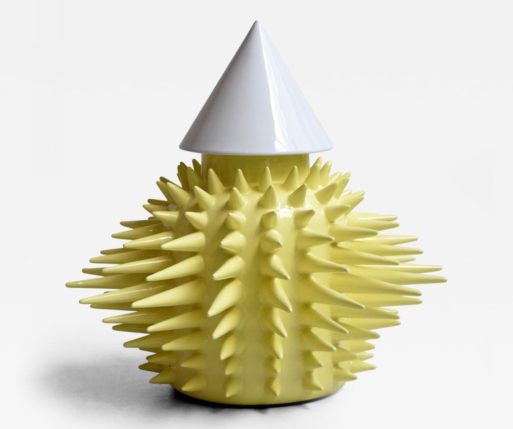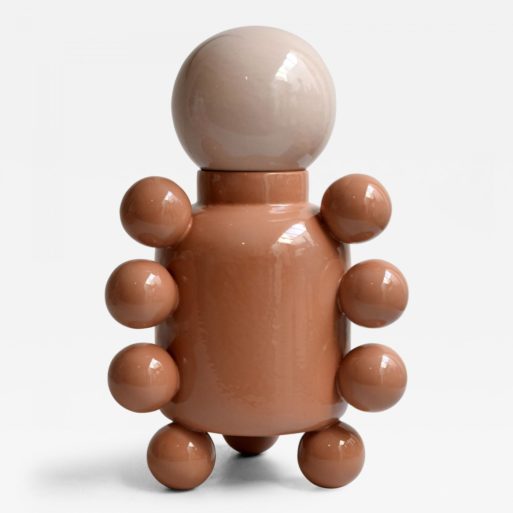Early last year, Carrie Fisher’s brother, Todd, surprised her fans by showing up to her mom Debbie Reynolds’ funeral with Fisher’s ashes in an urn shaped like a giant Prozac pill. Fisher had owned the pill for many years, and it was one of her favorite things, Todd said. What better way to store the larger-than-life actress and mental health activist for all eternity than in a prized possession that symbolized much of who she was in life?

Ceramic funerary urn by Mauricio Paniagua and Tony Moxham
Credit: incollect.com
With cremation becoming the most popular form of final disposition in the United States, the idea of the traditional, one-size-fits-all funerary urn is rapidly becoming a thing of the past. Many people are seeking out creative and even light-hearted solutions to the question: “Where do I want my ashes stored?” Like Fisher’s brother, they are looking for urns that mirror the person they are and the kinds of lives they led.
Enter the design duo of Tony Moxham and Mauricio Paniagua, who are working to redefine the traditional funerary urn in a truly unique way. Their over-sized, geometric, boldly colored urns speak to the need for new approaches to an old dilemma, as well as an emerging mindset that accepts death as an extension of life. “[We didn’t see] any reason for a vessel holding the ashes of the dead to necessarily look either inanimate, subtle, or understated in any way,” Moxham said in his artist’s statement to Incollect. “If you look at traditional pre-Hispanic funeral urns, their design tends to be brash, narcissistic, egotistical, and heavily symbolic. We feel our funeral urns fulfill a similar functional, decorative, and symbolic role.”

Funerary urn by Mauricio Paniagua and Tony Moxham
Credit: incollect.com
And indeed, the ceramic urns designed by the Mexico City-based pair are reflective of pre-Hispanic culture, which drew heavily from the natural world. Their large size is a nod to the Mayan burial figurines from the island of Jaina, while their pointy spikes reference the sacred ceiba plant, a giant tree native to Mexico and Central America. The tree is dotted with conical thorns, which the ancient cultures of Mesoamerica saw as a ladder between spiritual worlds.
Yet there is also a very modern element to the pair’s designs. The urns are at once functional, decorative, pretty and fun to behold.

Funerary urn by Mauricio Paniagua and Tony Moxham
Credit: incollect.com
A somewhat unlikely duo, Moxham and Paniagua are from opposite sides of the world — Moxham from Australia and Paniagua from Guatemala. They met in 2005 in New York’s East Village, and soon relocated to Mexico City, where, in 2006, they founded the design brand DFC. Today, they work with a small group of local artisans who painstakingly hand cast the elements of each urn, then assemble it by hand in much the same way the ancient Mayans would have done.
The results are a unique form of artistic expression that speaks for itself.
Note: Moxham and Paniagua’s designs are sold under the brand MT Objects and are available at ADN Galería, a Mexico City gallery that specializes in historical and contemporary design.

 A Bold, Playful Take on the Traditional Funerary Urn
A Bold, Playful Take on the Traditional Funerary Urn


 John Mulaney’s “Funeral Planning” on Netflix: No Real Plan
John Mulaney’s “Funeral Planning” on Netflix: No Real Plan

 Composting Bodies Is Now Legal in a Dozen States
Composting Bodies Is Now Legal in a Dozen States














